Army AIT Lengths List: Quick Guide to Training Durations

When you join the Army, your journey doesn’t stop after Basic Combat Training. Advanced Individual Training (AIT) is where you get the skills needed for your specific Military Occupational Specialty (MOS).
The length and location of AIT depend on your chosen career path in the Army.
Some courses may be as short as four weeks, while others can stretch up to 84 weeks.
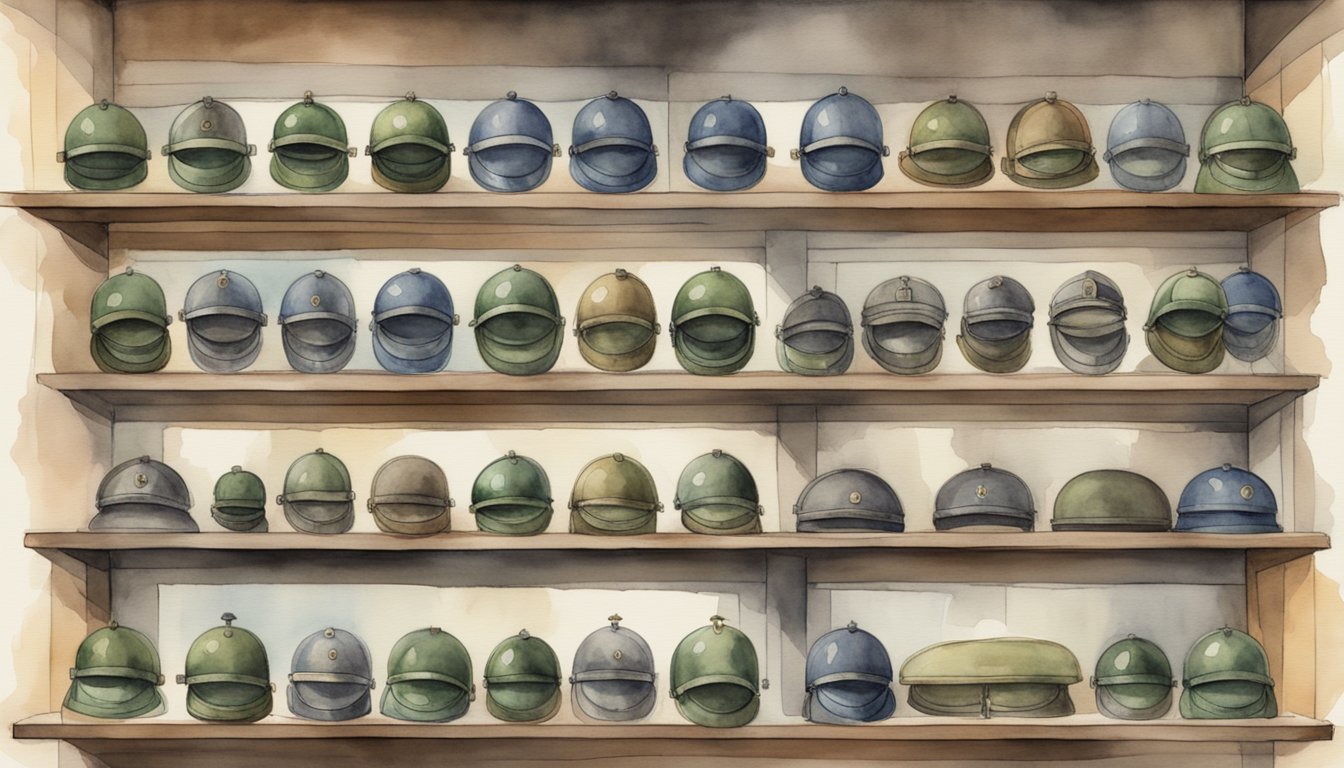
Every MOS has its own unique training requirements.
For instance, if you become a wheeled vehicle mechanic (MOS 91B), you’ll undergo specialized training to master your role.
AIT combines classroom learning with fieldwork to ensure you’re fully prepared for your duties.
Whether you’re headed into aviation, logistics, or combat support, you’ll find that AIT is designed to give you real-world experience.
Your training will take place at various branch-specific locations, each tailored to fit the skills needed for your MOS.
Ready to see where your Army career could take you? Let’s dive deeper into the specifics of AIT lengths and what to expect.
Key Takeaways
- AIT varies in length from four to 84 weeks.
- Each MOS has specific training requirements and locations.
- Training combines classroom and hands-on experience.
Understanding the Army AIT Basics
Advanced Individual Training (AIT) is where you develop the skills needed for your specific military job.
This training follows Basic Combat Training (BCT) and includes different phases that focus on discipline, work ethic, and technical skills.
Transition From Basic Combat Training
After completing Basic Combat Training, you move on to AIT.
This transition can be challenging because it requires adapting from a general military focus to specialized skills training.
During AIT, you will be focusing on learning the technical aspects of your Military Occupational Specialty (MOS).
You will also continue to follow military structure and discipline, but AIT allows for more privileges, like weekend passes and personal phone calls.
AIT Phases: Phase IV and Phase V
In AIT, the training is split into different phases. Phase IV is the initial phase where you continue to follow a strict schedule and maintain discipline.
Your privileges will be limited.
After demonstrating satisfactory performance and discipline, you will advance to Phase V.
In Phase V, you gain more freedom and responsibilities.
You might be allowed off-post passes and increased personal time.
These phases prepare you for the independence required in your future assignments.
Work Ethic and Discipline in AIT
Your success in AIT relies heavily on your work ethic and discipline.
Being punctual, completing tasks efficiently, and following orders are crucial.
Your instructors will be closely observing your behavior and performance.
Maintaining high standards in your work and discipline will lead to greater privileges and possibly recognition.
This part of your training is essential for building the habits that will be expected of you throughout your military career.
Comprehensive MOS List and AIT Lengths

Army AIT durations vary based on your Military Occupational Specialty (MOS).
Each MOS requires specific training to prepare you for your military duties, whether you’re on the front line, in support roles, or handling military intelligence.
Combat Arms MOS Training Durations
Combat Arms MOS focuses on direct conflict roles.
For infantry, like MOS 11B, training lasts about 14 weeks and takes place at Fort Benning, GA.
For artillery, MOS 13B (Cannon Crewmember) AIT is typically around 7 weeks. Armor crewmen, such as MOS 19K, also train at Fort Benning for about 15 weeks.
Combat engineers, MOS 12B, train for 14 weeks to learn construction and demolition skills essential for battlefield operations.
Military Intelligence and Communications MOS
Military intelligence and communications roles require precise skills.
If you’re an intelligence analyst in MOS 35F, expect AIT to last 16 weeks, mostly at Fort Huachuca, AZ.
Communications specialists, like MOS 25Q (Multichannel Transmission Systems Operator-Maintainer), undergo AIT for 15 weeks at Fort Gordon, GA.
Training covers everything from data encryption to satellite communications.
MOS 25B, Information Technology Specialists, also have intensive training spanning 20 weeks, offering skills in computer systems and network defense.
Logistics, Engineering, and Support MOS
Support roles are vital in any military operation.
Logistics specialists, such as MOS 92Y (Unit Supply Specialist), have a 10-week AIT at Fort Lee, VA.
Wheeled vehicle mechanics, MOS 91B, undergo a 13-week training program to become proficient in vehicle repairs and maintenance.
Military police, MOS 31B, have a 20-week AIT at Fort Leonard Wood, MO, where you’ll learn law enforcement and combat skills.
Ordnance technicians for MOS 89B train for about 10 weeks focused on the handling and disposal of munitions.
This training is critical to ensuring safety in combat zones.
Specialized Training for Technological Advancements
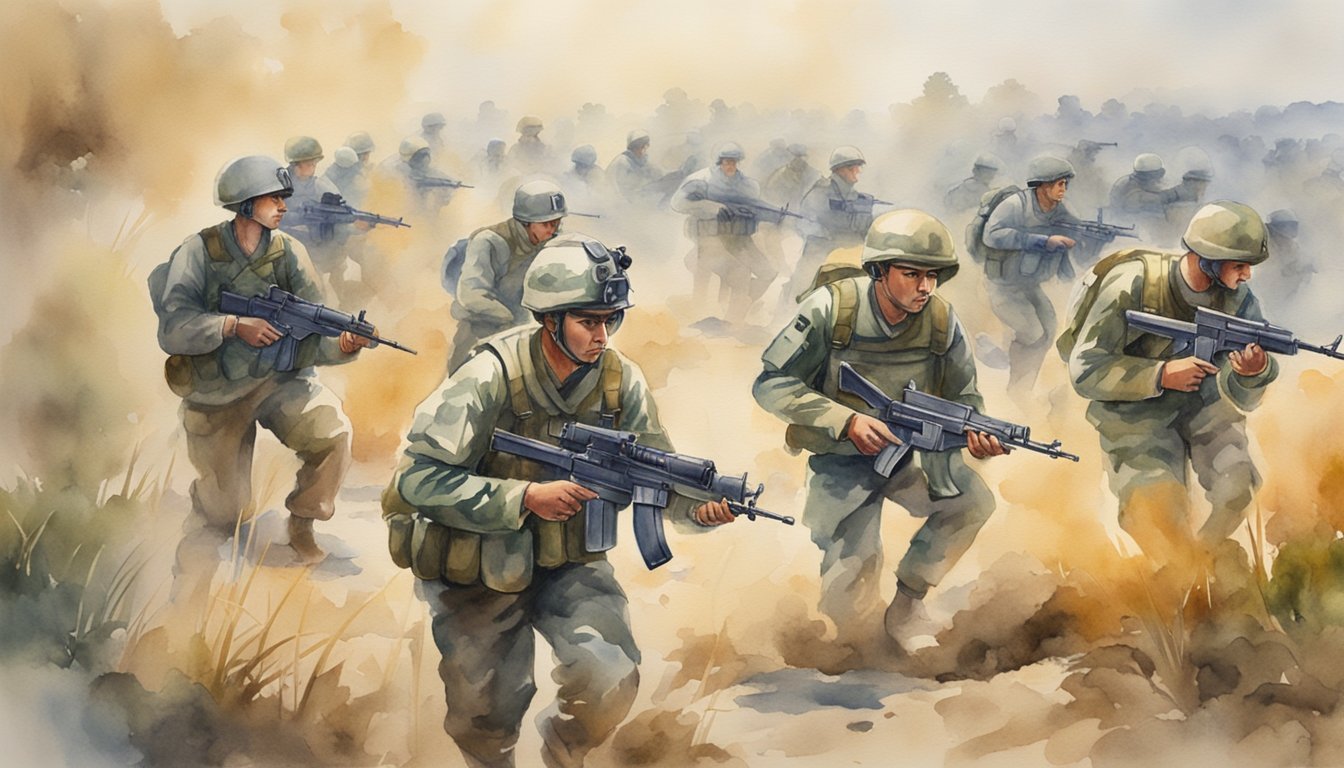
The military is constantly evolving to meet new challenges, especially with technological advancements.
Specialized training is essential for roles in information technology, aviation, and handling chemical, biological, radiological, and nuclear threats.
Information Technology and Cyber Defense
In the military, handling digital threats and maintaining secure communication networks is crucial.
As an Information Technology Specialist, you will likely train at Fort Gordon, GA.
This 20-week program teaches you to manage computer networks and secure data systems.
You’ll also learn to detect and counter cyber threats.
Mastering these skills helps you protect military systems from hackers and ensure secure operations.
Aviation and Aircraft Maintenance
Aviation is a key component of military operations.
If you’re pursuing a career in aircraft maintenance, you’ll receive training that covers everything from engine repair to electronic systems.
For example, training for an Aviation Mechanic could include learning to troubleshoot helicopters, drones, and other military aircraft.
You’ll become proficient in maintaining flight safety and ensuring aircraft are mission-ready at all times.
Chemical, Biological, Radiological, and Nuclear (CBRN)
Dealing with CBRN threats requires specialized skills.
Training in this area covers identifying and mitigating dangers from chemical, biological, radiological, and nuclear materials.
At facilities like Fort Leonard Wood, you’ll practice handling hazardous materials and using protective gear.
This training is crucial for responding to and neutralizing threats that could impact both military personnel and civilians.
Hands-On Training Techniques and Skills

Hands-on training is crucial in the military for building practical skills that can be used in real-world situations.
Mastering vehicle maintenance, weapons handling, and food services ensures you are prepared for various scenarios.
Vehicle and Equipment Maintenance
In the military, keeping vehicles and equipment in top condition is vital.
As a wheeled vehicle mechanic (MOS 91B), you will learn how to inspect, service, and repair different types of military vehicles.
You will:
- Perform Diagnostics: Use diagnostic tools to determine mechanical issues.
- Conduct Repairs: Fix engines, transmissions, and other crucial systems.
- Preventive Maintenance: Follow routines to avoid equipment failures.
Ensuring vehicles are always ready requires practice and precision, skills you’ll hone through extensive hands-on training sessions.
Weapons and Small Arms Expertise
Handling and maintaining weapons is another essential skill.
You will learn about various firearms and weapons systems, from assault rifles to more specialized arms.
The training includes:
- Disassembly and Reassembly: Taking apart and putting back together weapons to understand their mechanics.
- Cleaning and Maintenance: Keeping firearms in excellent condition to ensure reliability.
- Marksmanship: Focusing on shooting techniques and accuracy under different conditions.
These practical exercises ensure you can confidently and safely handle your assigned weapon, critical in combat situations.
Food Services and Hospitality
Food services in the military go beyond just cooking; they include managing supplies and ensuring all personnel have nutritious meals.
Training for food services specialists (MOS 92G) is comprehensive.
You will:
- Plan Meals: Design menus that meet nutritional standards and cater to large groups.
- Prepare and Cook: Learn cooking techniques suitable for field conditions and large-scale operations.
- Sanitize and Store: Ensure kitchens and food storage areas are hygienic and organized.
Effective food service ensures troops are well-fed and healthy, contributing to overall mission success.
These hands-on skills are refined through practical application in both kitchen and field environments.
Branch-Specific AIT Locations
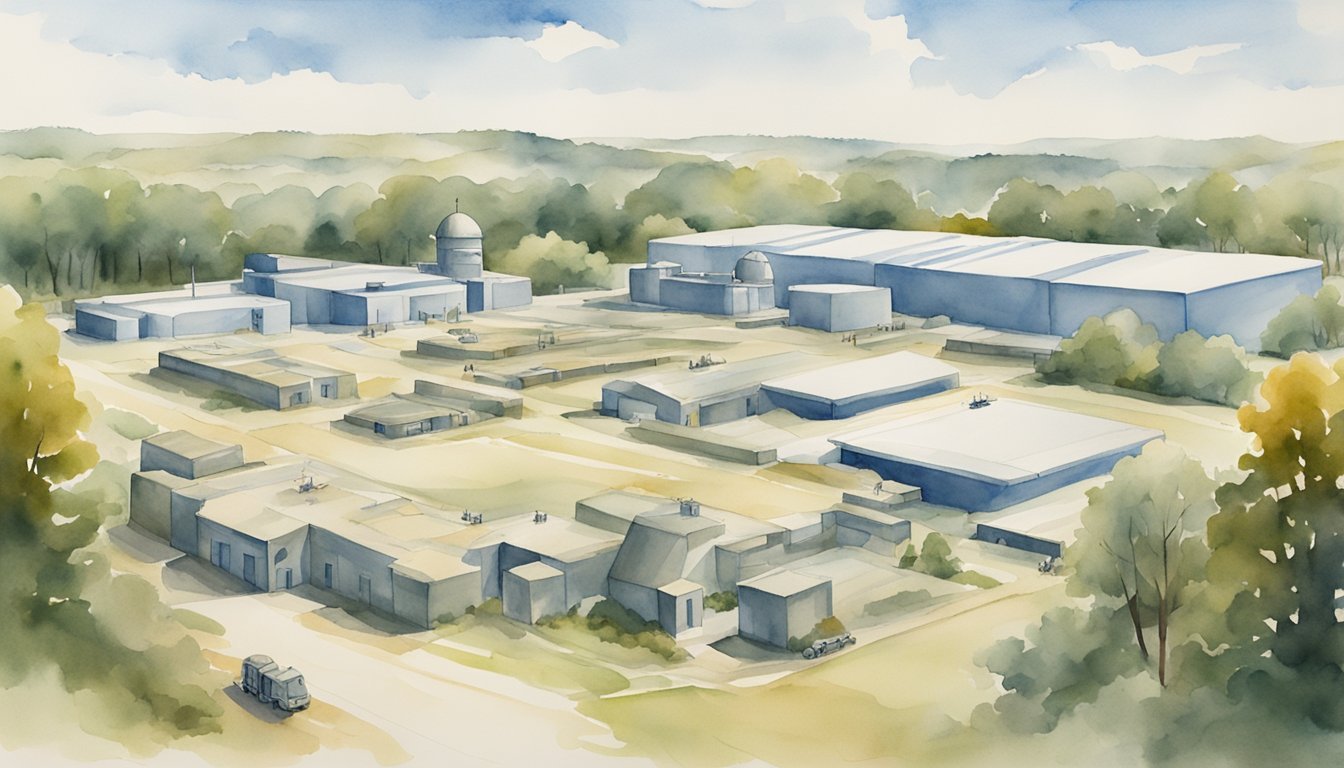
The Army’s Advanced Individual Training (AIT) programs are crucial for preparing soldiers for their specific roles.
These programs vary depending on the Military Occupational Specialty (MOS) and are held at various locations across the United States.
Fort Benning, Georgia: Infantry and Armor
Fort Benning is the primary location for Infantry and Armor AIT.
If you are in these branches, you’ll spend much of your time here.
The training here is intensive, focusing on combat techniques, weapons handling, and physical fitness.
Infantry AIT covers skills such as marksmanship, patrol and tactical operations, and urban warfare tactics.
In contrast, Armor AIT focuses on operating and maintaining tanks and armored vehicles.
This training ensures that you are combat-ready and proficient in your designated role.
Fort Leonard Wood, Missouri: Engineering and Military Police
Located in Missouri, Fort Leonard Wood is home to the Engineering and Military Police AIT programs.
As an engineer, you will learn about construction, demolition, and field fortifications.
The training includes using heavy machinery, explosives, and surveying equipment.
For the Military Police, the focus is on law enforcement within the Army.
This includes criminal investigation, detainee operations, and maintaining order on military installations.
This training is essential for maintaining security and order within the Army.
Fort Gordon, Georgia: Signals and Cyber
Fort Gordon in Georgia is where you will go for Signals and Cyber AIT.
The Signals AIT program revolves around establishing and managing communication networks.
This includes learning about radio operations, satellite communications, and signal support.
If you’re in the Cyber branch, your training will include cybersecurity measures, network defense, and cyber warfare tactics.
Both programs ensure you are equipped to handle the technological aspects of modern military operations.
By understanding the specifics of each location and AIT program, you can better prepare for the challenges and expectations you will face in your military career.
Logistics and Supply Chain During AIT

You will gain essential skills in managing transportation, handling supplies, and overseeing resource management.
Understanding these fields is vital for ensuring operational efficiency and readiness in the military.
Transportation and Watercraft Operations
In this area, you’ll learn how to move personnel and materials efficiently.
Training includes the use of different vehicles and watercraft, which are crucial for deploying troops and delivering supplies where they are needed most.
You might work with trucks, jeeps, or larger vehicles.
You’ll also get familiar with boats and ships used for logistics, ensuring you can manage operations on both land and water.
This training prepares you to handle real-world scenarios where efficient transportation is key to mission success.
Finance and Resource Management
Here, you will focus on managing budgets and resources.
This includes handling financial documents, maintaining accountability, and ensuring that funds are correctly allocated.
Budgeting skills are essential in the military, as you need to make sure every dollar is spent wisely.
You’ll learn how to track expenses, manage supply requests, and oversee inventory.
This training ensures that operations run smoothly and resources are available when needed.
Petroleum and Munitions Handling
This section involves the safe and efficient use of fuel and ammunition.
Handling petroleum products means knowing how to store and transport fuel safely.
You will learn about the procedures for refueling vehicles and equipment under different conditions.
Munitions handling is another critical area.
You will be trained in storing, transporting, and using various types of ammunition.
Safety protocols are emphasized to prevent accidents and ensure that munitions are available and ready for use in any military operation.
Effective handling of these materials ensures that forces are always prepared and equipped.
AIT For Combat Support and Service Support Roles
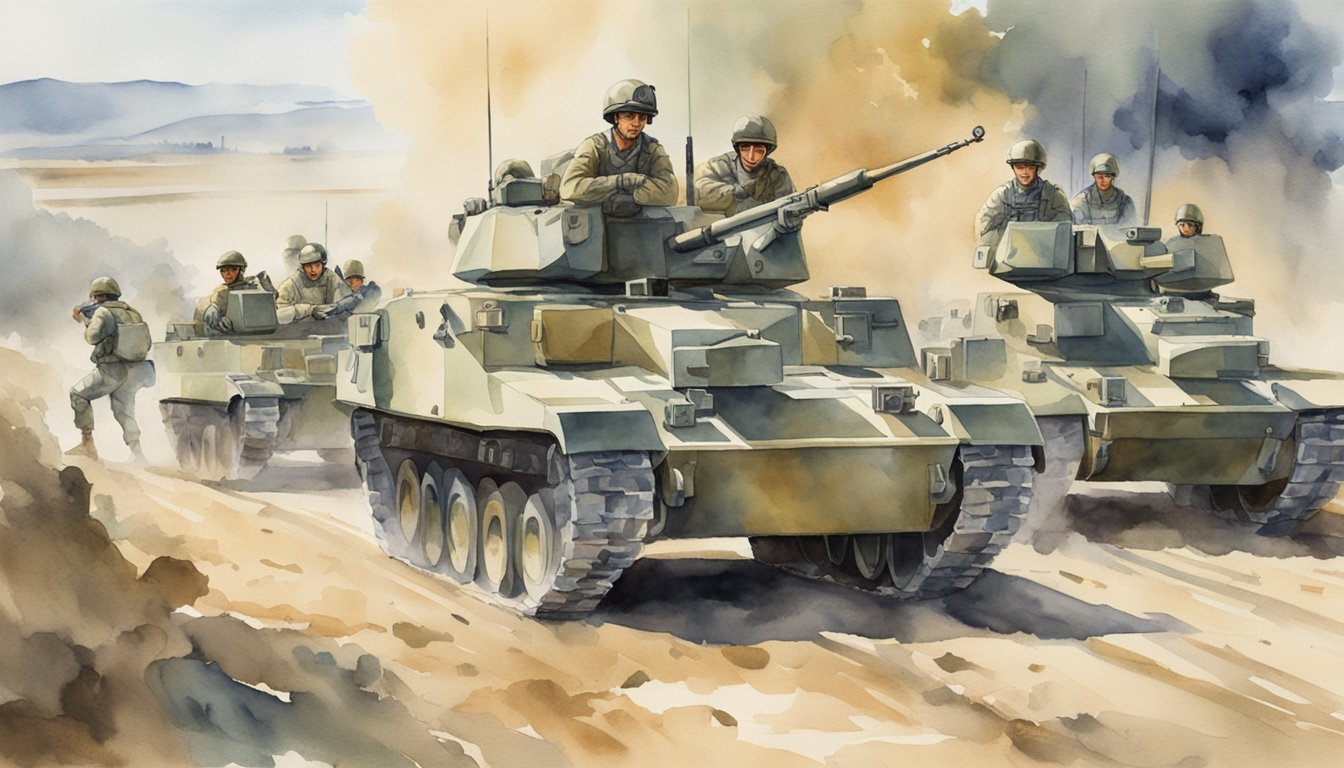
In the U.S. Army, soldiers in Combat Support and Service Support roles have specialized training needs.
These roles are crucial in maintaining the efficiency and effectiveness of military operations.
Below are key areas that involve detailed training programs to prepare soldiers for their specific duties.
Health Services and Medical Roles
In Health Services and Medical Roles, you will receive training to handle medical emergencies and support health services.
If you choose to become a Combat Medic Specialist (68W), your Advanced Individual Training (AIT) will last about 16 weeks.
You’ll learn emergency medical skills, including first aid, trauma care, and patient handling.
For those in medical logistics, such as 68J (Medical Logistics Specialist), AIT focuses more on managing medical supplies and equipment.
Your training would cover inventory management, distribution of medical materials, and maintenance of medical records.
Legal Services and Military Justice
In Legal Services and Military Justice, you’ll help maintain order and discipline within the military.
Military Paralegals (27D) go through specialized AIT that lasts about 10 weeks.
This training involves military law, legal documentation, and courtroom procedures.
As a military paralegal, you assist in preparing legal documents, manage case files, and support court-martial proceedings.
You’ll also be trained in legal research and writing, which are essential for helping military lawyers.
Human Resources and Administration
In roles like Human Resources Specialist (42A), your AIT will last approximately 10 weeks.
Training focuses on personnel management, record-keeping, and various administrative tasks.
Your responsibilities will include maintaining soldier records, processing awards, and overseeing personnel assignments.
You’ll get familiar with Army software systems that manage personnel data and perform tasks related to payroll and benefits.
This training ensures you can efficiently manage human resources, keeping the Army running smoothly and effectively.
Career Opportunities After AIT Completion
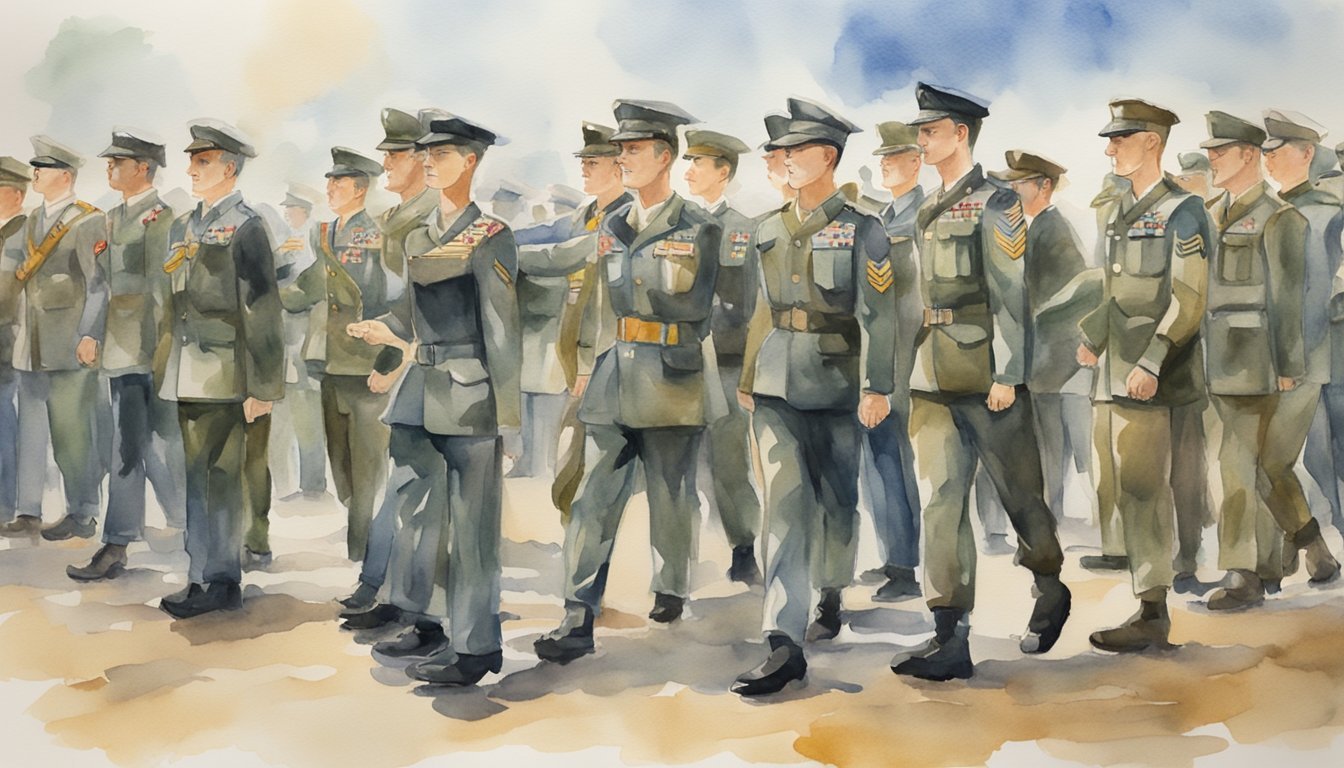
When you complete Army Advanced Individual Training (AIT), you can expect doors to open for various career advancements.
This includes promotions, opportunities to become an officer, and the ability to transfer your military skills to civilian life.
Promotions and Career Advancement
After finishing AIT, you are eligible for promotions based on your performance and skills.
Regular evaluations help identify top performers.
Exceptional work and dedication can lead to faster promotions and more responsibilities in your Military Occupational Specialty (MOS).
By showing leadership and initiative, you can move up in rank from Private to higher levels like Sergeant or Staff Sergeant.
Promotions bring better pay, more benefits, and greater respect within the Army.
Transition to Officer Roles
Becoming an officer is another path you can take after completing AIT.
This requires enrolling in Officer Candidate School (OCS) or applying for direct commission programs.
Officers lead and manage enlisted soldiers, and being an officer comes with higher pay and more responsibilities.
To transition to an officer role, you generally need a bachelor’s degree and leadership experience.
Officers, including 2nd Lieutenants and Captains, often have the chance to further their education and training throughout their careers.
Civilian Skills and Qualifications
The training and skills you gain in AIT aren’t limited to military use; they are valuable in the civilian job market as well.
Many roles in the Army correspond to civilian careers, such as healthcare, engineering, or IT.
Your MOS training can qualify you for certifications or licenses that are recognized outside of the military.
For example, if you trained as an Army medic, you could meet the requirements for civilian medical certifications.
This crossover can make your transition to civilian life smoother and can provide a strong foundation for future employment.
Frequently Asked Questions

Here are some common questions about Army AIT lengths.
Each MOS has different training needs, leading to a wide range of training durations.
From the shortest to the longest, we’ve got you covered.
What’s the deal with the shortest and longest AIT programs in the Army?
Some AIT programs are just a few weeks long, like those for certain support roles.
On the other hand, technical specialties, such as certain medical or intelligence jobs, can require over a year of training.
This ensures all soldiers are well-prepared for their specific roles.
How does AIT length vary by MOS?
The length of AIT depends on your Military Occupational Specialty (MOS).
For example, a wheeled vehicle mechanic (MOS 91B) has one set length while an optical device repairer (MOS 68H) has another.
Each MOS has unique training needs which dictate how long you’ll be in AIT.
What goes down after finishing AIT in the Army?
After AIT, you’ll be assigned to your permanent duty station.
This is where you’ll apply all the skills you learned in both Basic Combat Training and AIT.
It’s the start of your life as a fully trained soldier in the U.S. Army.
Can I chill with my spouse during Army AIT?
Visiting with your spouse might be limited during AIT.
The Army often restricts personal time to ensure focus on training.
However, policies may vary by location and specific training program, so it’s best to check with your training unit.
Is there a difference in AIT duration between the Army Reserves and Active Duty?
Typically, AIT lengths don’t differ much between the Army Reserves and Active Duty.
Both groups usually undergo the same training for their MOS.
The main difference is what happens afterward, like duty commitments and locations.
How much time do I have to commit to both basic training and AIT?
Basic Combat Training last about 10 weeks.
AIT length varies by your MOS, so adding this to the 10 weeks can mean a total commitment from a few months to over a year in training.
This is essential to prepare you for your role.






